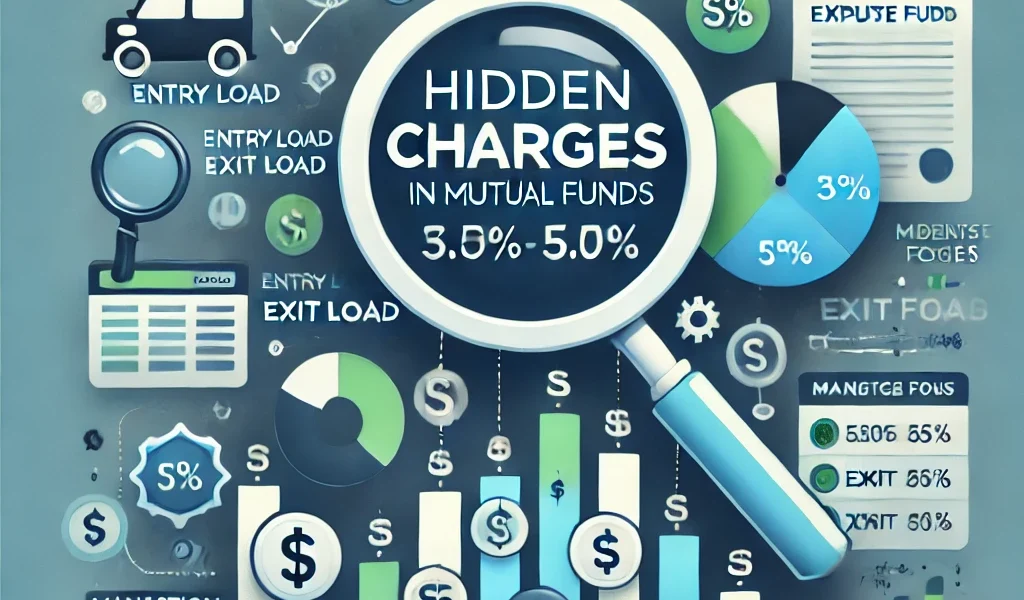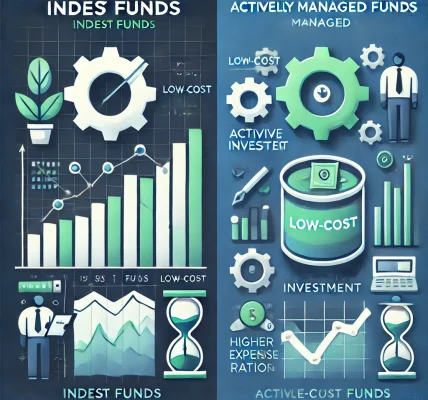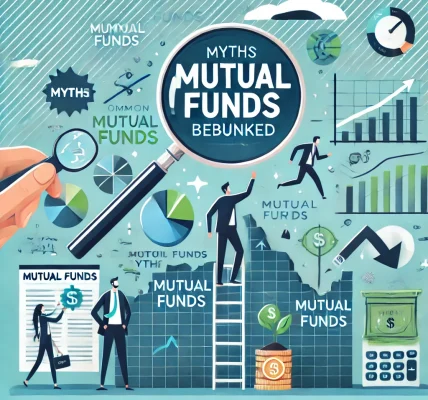Introduction
Mutual funds are a popular investment vehicle that offer diversification, professional management, and potential long-term wealth creation. However, many investors overlook the various charges associated with mutual funds, which can significantly impact overall returns. While some fees are transparent, others may be hidden or not immediately obvious. Understanding these charges is crucial for making informed investment decisions.
This article will break down all the hidden charges in mutual funds, how they affect your investment, and how to minimize them for better returns.
Types of Charges in Mutual Funds
1. Expense Ratio
The expense ratio is the annual fee that a mutual fund charges to cover its operating expenses, including management fees, administrative costs, and marketing expenses. It is expressed as a percentage of the fund’s average assets under management (AUM). While this fee is disclosed, many investors do not realize its long-term impact on their returns.
How it affects you: A higher expense ratio means lower net returns. Actively managed funds usually have a higher expense ratio than passively managed funds like index funds or exchange-traded funds (ETFs).
How to minimize it: Opt for mutual funds with a low expense ratio, particularly if you are investing for the long term.
2. Entry Load (Now Abolished)
Earlier, mutual funds used to charge an entry load, which was a fee for investing in a scheme. However, this charge has been abolished by regulators in many countries, including India and the U.S.
3. Exit Load
An exit load is a fee charged when an investor redeems mutual fund units before a specified period. This is designed to discourage early withdrawals.
Example: If a fund has an exit load of 1% for redemptions within a year, and you withdraw $10,000, you will pay a $100 exit load.
How to minimize it: Hold your investments for the required duration to avoid exit load fees.
4. Transaction Charges
Some mutual funds charge a one-time transaction fee for investments above a certain limit. This fee applies to both new and existing investors.
How it affects you: While it is a small fee, it can add up if you frequently invest in multiple funds.
How to minimize it: Check if your fund charges transaction fees and compare different fund houses before investing.
5. Fund Management Fees
This is a part of the expense ratio and is paid to fund managers for managing the investment portfolio. Actively managed funds typically have higher fund management fees compared to passive funds.
How to minimize it: Choose index funds or ETFs if you want to save on fund management costs.
6. Custodian Fees
Custodian fees are charged to cover the expenses related to safekeeping the securities in which a mutual fund invests. These fees are generally minimal but still contribute to the overall expense ratio.
How it affects you: They are deducted from the fund’s NAV (Net Asset Value), reducing your returns slightly.
7. Switching Fees
If you switch from one mutual fund scheme to another within the same fund house, you might be charged a switching fee. This is common in hybrid or balanced funds where investors shift between equity and debt options.
How to minimize it: Plan your investments well to avoid frequent switching.
8. Stamp Duty and GST
Investors are required to pay stamp duty and Goods and Services Tax (GST) on certain transactions related to mutual funds.
How to minimize it: Since these are government-imposed fees, they cannot be avoided. However, being aware of them helps in financial planning.
9. Performance Fees (Rare but Possible)
Some funds charge a performance fee based on the returns generated beyond a certain threshold. This is more common in hedge funds but may apply to certain mutual funds as well.
How it affects you: These fees can reduce your additional profits when the fund performs well.
How to minimize it: Choose funds with a transparent fee structure.
How to Reduce the Impact of Hidden Charges
- Read the Fund’s Offer Document Carefully: Before investing, thoroughly review the scheme information document (SID) and key information memorandum (KIM) to understand all applicable charges.
- Choose Direct Plans Over Regular Plans: Direct plans have a lower expense ratio compared to regular plans, as they do not involve distributor commissions.
- Opt for Low-Cost Index Funds: Passive funds generally have lower management fees and expense ratios.
- Avoid Frequent Withdrawals: Holding your investments longer can help you avoid exit loads and unnecessary transaction fees.
- Compare Different Funds: Use online comparison tools to analyze the expense ratio and other charges before investing.
- Invest in Tax-Efficient Funds: Tax-saving funds (such as ELSS) can help minimize your tax liability while providing long-term growth.
Conclusion
Hidden charges in mutual funds can significantly impact your overall investment returns. While these fees are necessary for managing the fund, being aware of them allows investors to make informed decisions. By choosing low-cost funds, avoiding unnecessary charges, and understanding the fine print, you can maximize your investment returns and achieve your financial goals efficiently.
Before investing, always conduct thorough research and consult a financial advisor if needed.




